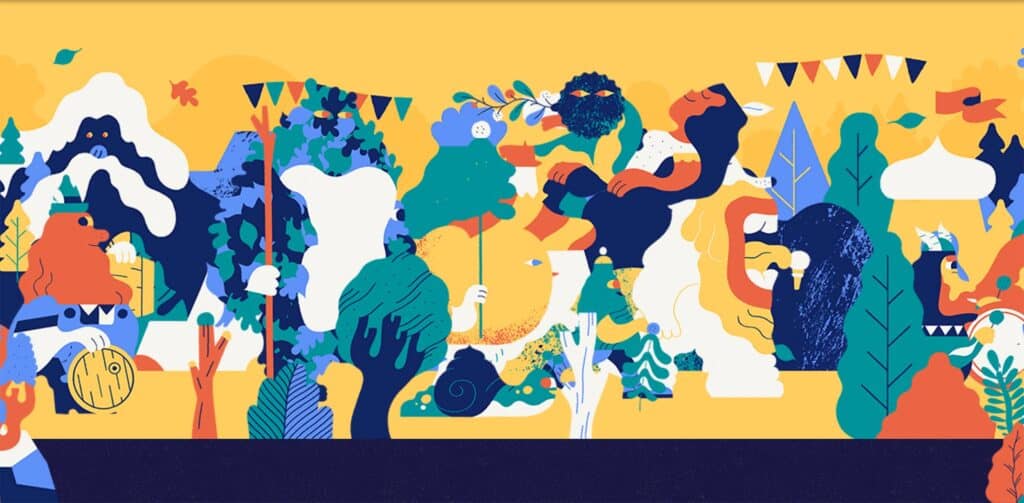2015 has inherited a lot of trends from previous years, there’s been a steady evolution of ideas — Flat Design into Material Design for example — but nothing as revolutionary as Responsive Design.
However, we are starting to see trends that feel fresh, either through new treatments or because they’re genuinely new ways of approaching old problems. The most widespread of these so far, has been the use of patterns in web design.
Patterns serve a variety of purposes, from communicating a brand value, to adding motion to an interface, to enlivening the simple blocks of color that flat design favors. And the use of patterns, although not scientifically categorizable, falls into one of five broad and inter-related categories…
Generative patterns
The combination of design and code that makes up the Web has meant that it was always going to be a fertile environment for generative art, and designers working with mathematics. From the earliest days of the Web designers were experimenting with particle systems, but in recent months we’ve seen an increasing emphasis on particles existing within a more formal pattern. These geometric patterns are a natural evolution of the form, thanks to the fact that it relies so heavily on design units and code loops.
What’s really new is that, in 2015 we’re increasingly seeing businesses adopt these kinds of pattern as an integral element of their brand.
Data patterns
Business’ ongoing preoccupation with the concept of big data, is increasingly being visualized as patterns, despite the fact that big data is very unlikely to yield a shell-like pattern. This idea of simple mathematical forms being found amongst complex data is inextricably linked to the idea of knowledge, power, and insight. Companies that want to appear to have a unique understanding of an abstract concept like to employ the metaphor.
This, coupled with the growth of SaaS (Software as a Service) when businesses are selling not a product but an abstract concept, has lead to a rash of sites featuring the kind of pattern that a kid with a Spirograph would be proud of.
Craft patterns
2015 has been tipped for some time as the year that analog crafts make their way back into design portfolios, and patterns are playing a big role in that.
Whether they’re geometric, or more organic, patterns that break the digital mold emphasise a craft skill and speak to design authenticity. The key with this type of pattern is the variation in repetition, which adds a warm, human element to the design.
Animation patterns
Patterns don’t simply repeat visually. For years designers have been looping animated GIFs to create a repeating pattern over time. This technique is increasingly being used in conjunction with SVG to produce epic, engaging animations that are still practical on a mobile connection.
The repetition of this kind of pattern varies, from a looping background to a series of animations running together at different rates to create an infinitely changing pattern of movement. In 2015, as mobile continues to grow, looping SVGs provides a practical way to enliven an animation without compromising on speed.
Grid patterns
Patterns have always been an integral part of Web design, as witnessed by the fact that we could tile a background in CSS before we could position an element.
In the last year, we’ve started to see designers playing with traditional patterns, and especially the grid, to enliven designs. Elements are placed outside of a formal grid, but follow the same pattern of repetition. or the grid itself is highlighted with the color blocking favored by Flat Design aficionados.
